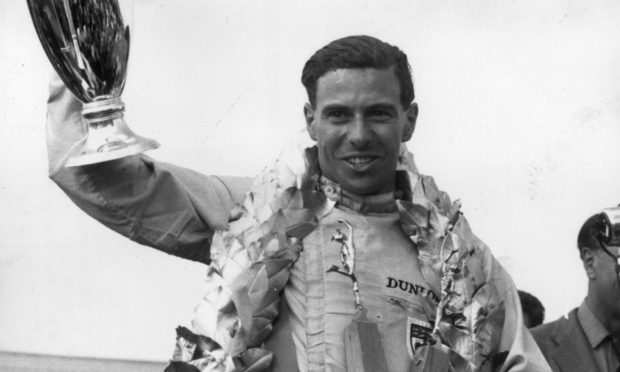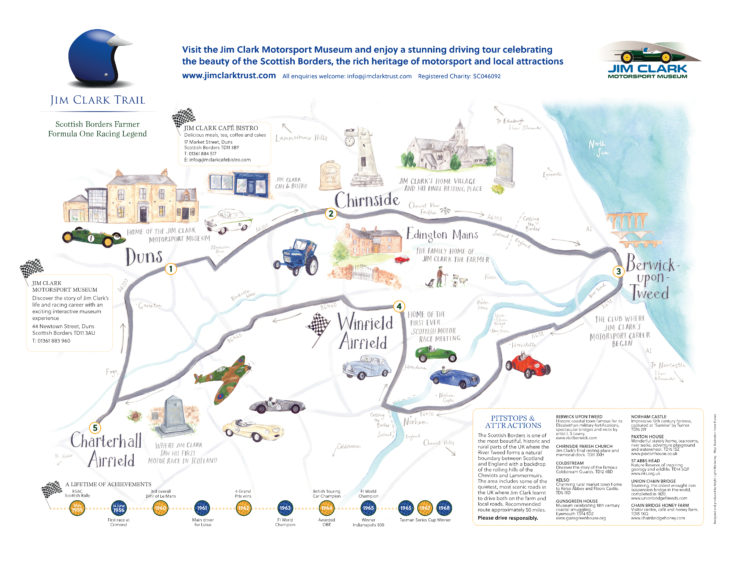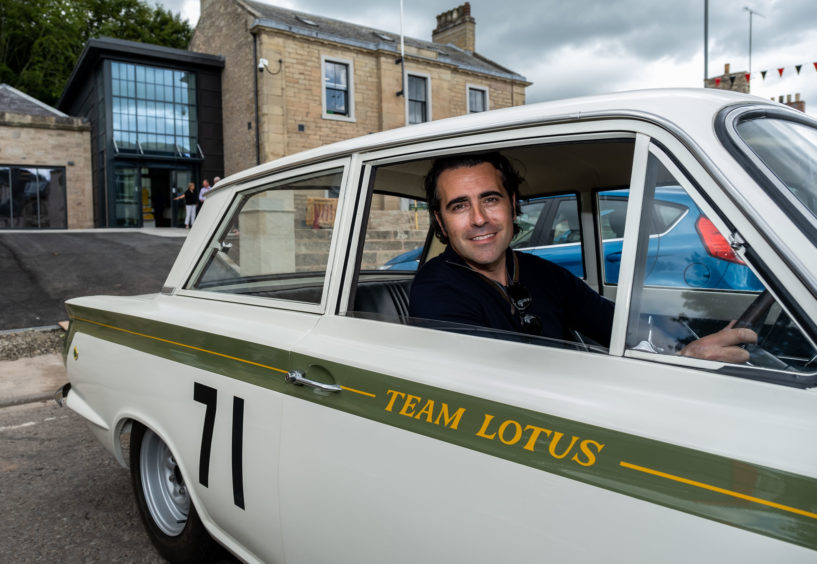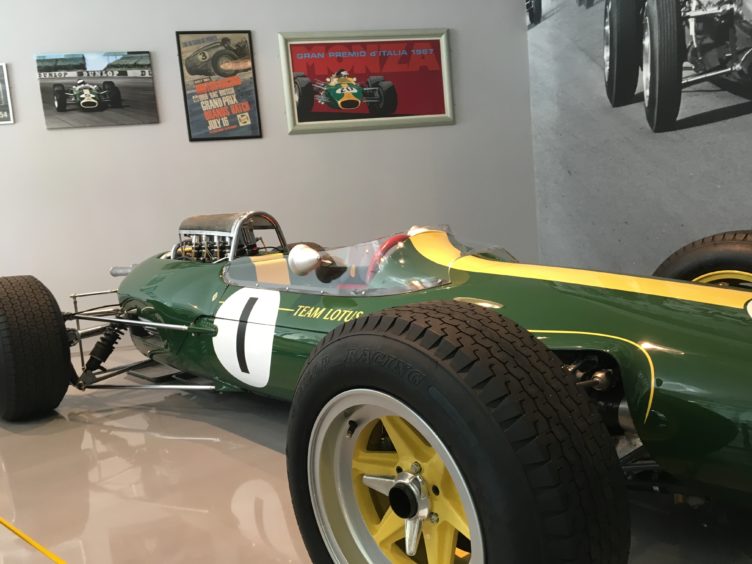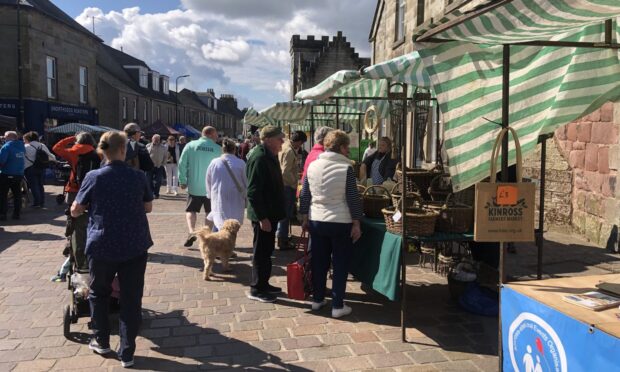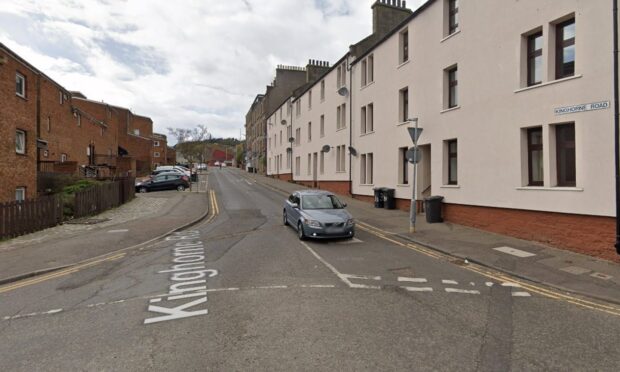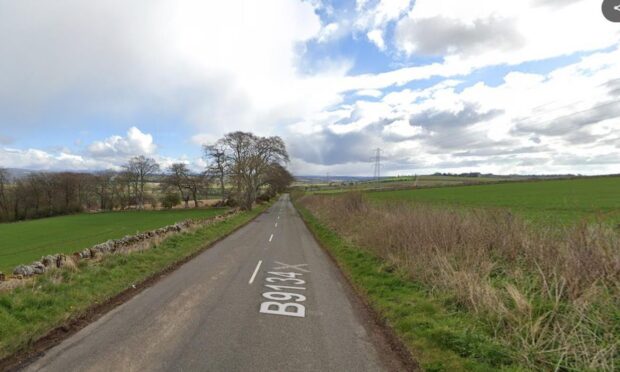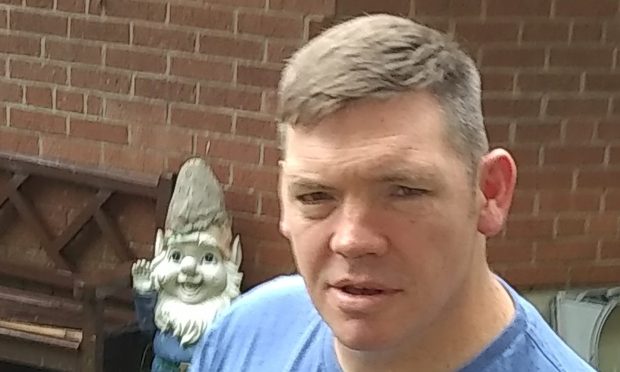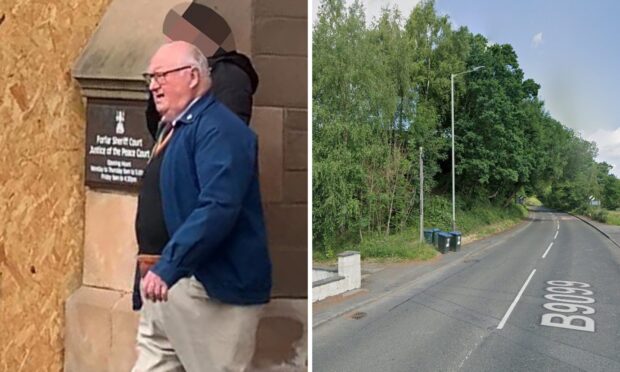A new driving adventure has been launched for fans of Fife-born Formula One legend Jim Clark.
The 50-mile Jim Clark Trail has been created in the double F1 World Champion’s adopted home of the Scottish Borders, and unveiled to coincide with the March opening of the museum honouring the motorsport ace.
Created on a more modest scale to the spectacular North Coast 500 route around the north of Scotland, the new trail aims to celebrate the rich motorsport heritage of the area around Clark’s Duns home and the culture of the area.
Fife could enjoy a welcome spin-off from the expected influx of motorsport fans who may be tempted to make the trip to the hamlet of Kilmany, where Clark is remembered with a life-sized statue near his farmhouse birthplace.
The new Borders trail starts and finished at the expanded Jim Clark Motorsport Museum in Duns, officially unveiled last summer following a five-year project to deliver the £1.6million expansion of the original Jim Clark Rooms.
It now houses larger displays of trophies and memorabilia covering the sheep farmer’s career behind the wheel, along with two of his iconic race cars.
The route takes in Clark’s adopted home village of Chirnside, his gravestone and memorial clock, before crossing the border to England to Berwick on Tweed.
It included the Union Chain Bridge, the world’s oldest wrought iron suspension bridge completed in 1820, before covering the heritage of Winfield and Charterhall via the Richard Hillary RAF Memorial.
It was at Winfield and Charterhall, once graced by a who’s who of motor racing including Stirling Moss, Nigel Hawthorn, Roy Salvadori, Guiseppe Farina, Reg Parnell and Jackie Stewart, that Clark honed his remarkable natural driving skills with Berwick and District Motor Club and the Border Reivers before joining the Lotus Grand Prix Team.
Ben Smith, chair of the Jim Clark Trust said: “The Jim Clark Motorsport Museum is fast becoming a magnet for classic and sports car enthusiasts.
“The Jim Clark Trail reveals insights on culture and history that highlights the stark contrast in Clark’s life from rural farming to the danger and glamour of motor racing in the 1960’s.”
